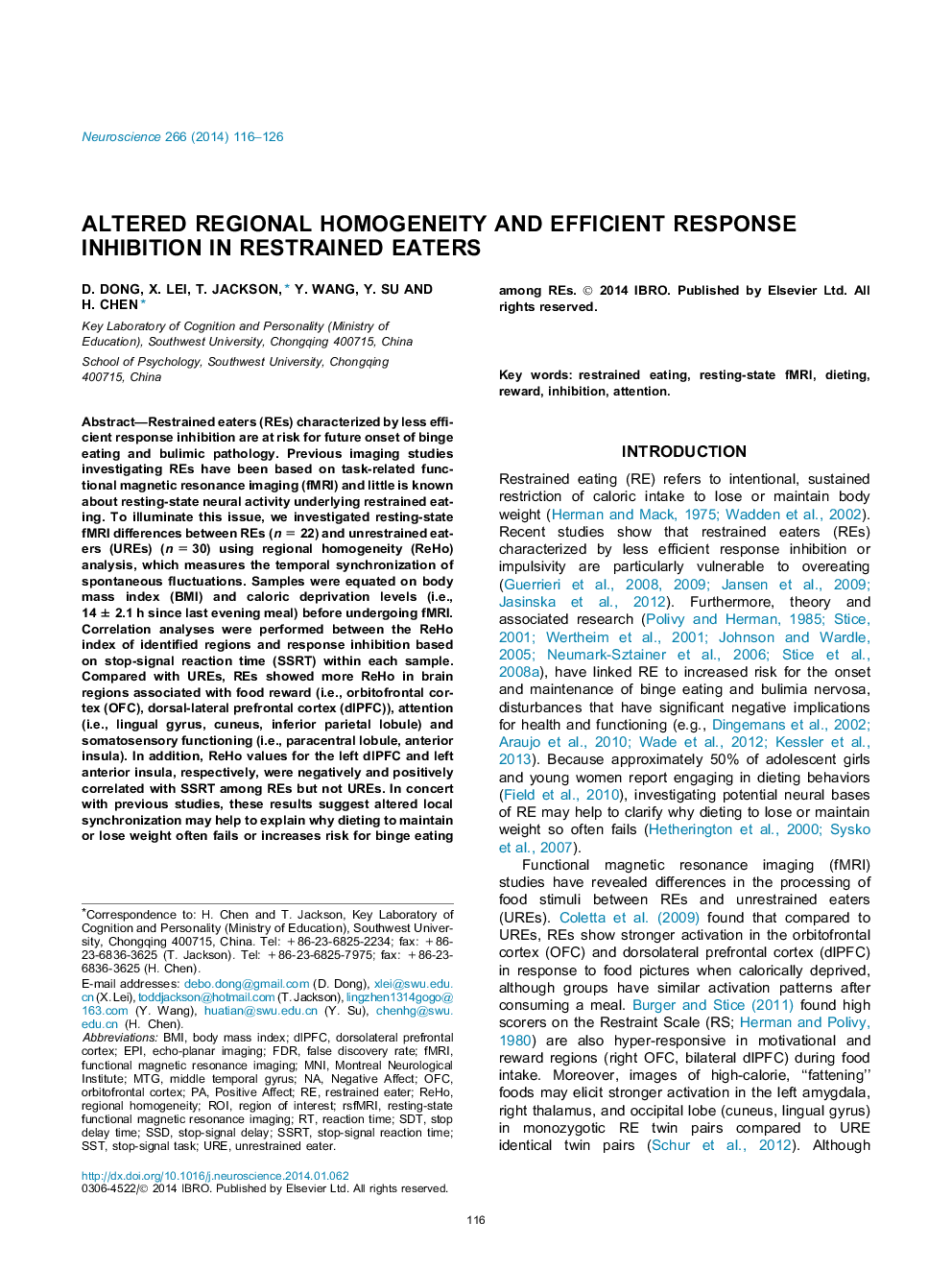| کد مقاله | کد نشریه | سال انتشار | مقاله انگلیسی | نسخه تمام متن |
|---|---|---|---|---|
| 4337680 | 1614810 | 2014 | 11 صفحه PDF | دانلود رایگان |
• Regional homogeneity (ReHo) analysis assessed resting-state activity among restrained eaters (REs) and unrestrained eaters (UREs).
• REs had more altered ReHo in regions related to food reward, attention, and somatosensory processing.
• Response inhibition was linked to dlPFC and anterior insula activity among REs but not UREs.
• Resting-state fMRI signals may inform why dieting typically fails.
Restrained eaters (REs) characterized by less efficient response inhibition are at risk for future onset of binge eating and bulimic pathology. Previous imaging studies investigating REs have been based on task-related functional magnetic resonance imaging (fMRI) and little is known about resting-state neural activity underlying restrained eating. To illuminate this issue, we investigated resting-state fMRI differences between REs (n = 22) and unrestrained eaters (UREs) (n = 30) using regional homogeneity (ReHo) analysis, which measures the temporal synchronization of spontaneous fluctuations. Samples were equated on body mass index (BMI) and caloric deprivation levels (i.e., 14 ± 2.1 h since last evening meal) before undergoing fMRI. Correlation analyses were performed between the ReHo index of identified regions and response inhibition based on stop-signal reaction time (SSRT) within each sample. Compared with UREs, REs showed more ReHo in brain regions associated with food reward (i.e., orbitofrontal cortex (OFC), dorsal-lateral prefrontal cortex (dlPFC)), attention (i.e., lingual gyrus, cuneus, inferior parietal lobule) and somatosensory functioning (i.e., paracentral lobule, anterior insula). In addition, ReHo values for the left dlPFC and left anterior insula, respectively, were negatively and positively correlated with SSRT among REs but not UREs. In concert with previous studies, these results suggest altered local synchronization may help to explain why dieting to maintain or lose weight often fails or increases risk for binge eating among REs.
Journal: Neuroscience - Volume 266, 25 April 2014, Pages 116–126
